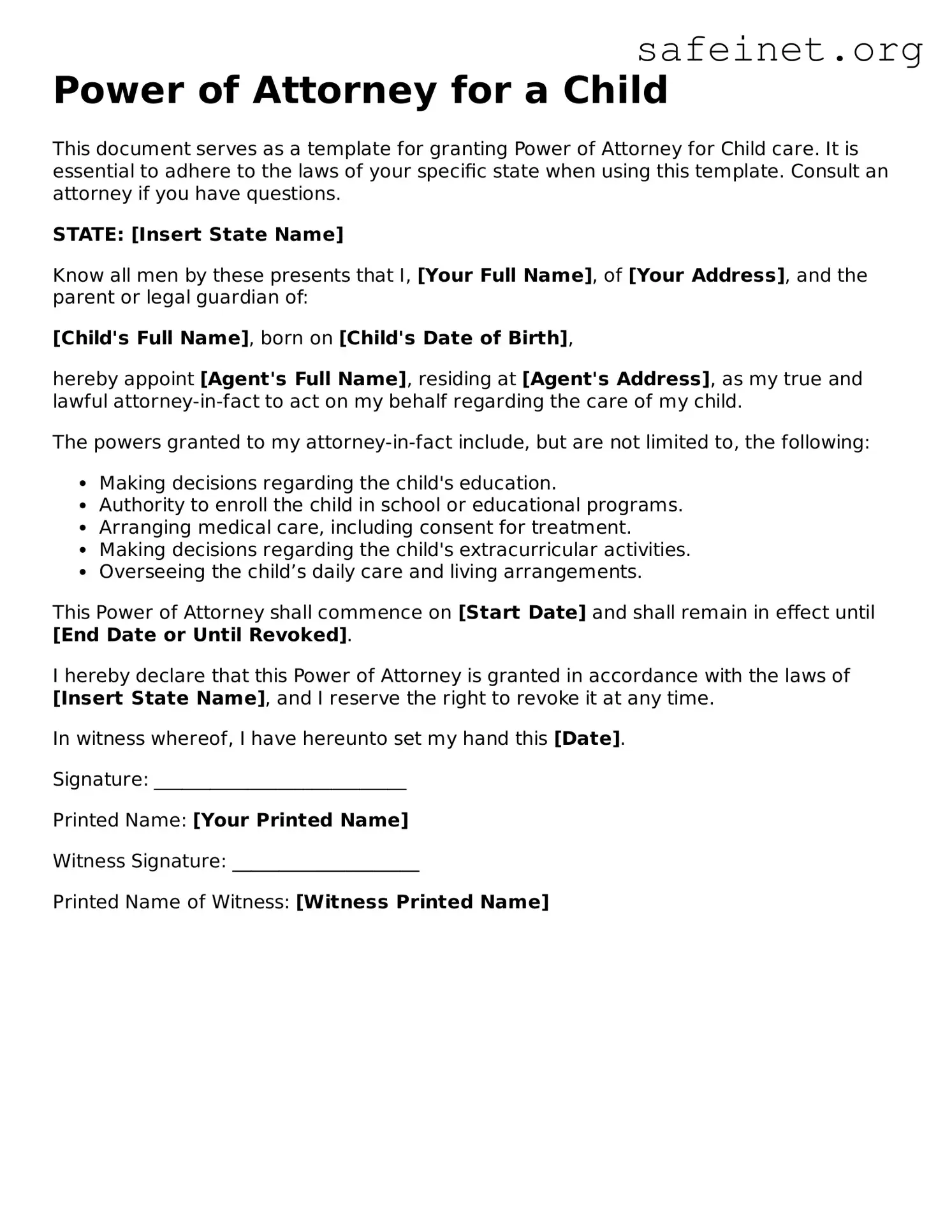Power of Attorney for a Child
This document serves as a template for granting Power of Attorney for Child care. It is essential to adhere to the laws of your specific state when using this template. Consult an attorney if you have questions.
STATE: [Insert State Name]
Know all men by these presents that I, [Your Full Name], of [Your Address], and the parent or legal guardian of:
[Child's Full Name], born on [Child's Date of Birth],
hereby appoint [Agent's Full Name], residing at [Agent's Address], as my true and lawful attorney-in-fact to act on my behalf regarding the care of my child.
The powers granted to my attorney-in-fact include, but are not limited to, the following:
- Making decisions regarding the child's education.
- Authority to enroll the child in school or educational programs.
- Arranging medical care, including consent for treatment.
- Making decisions regarding the child's extracurricular activities.
- Overseeing the child’s daily care and living arrangements.
This Power of Attorney shall commence on [Start Date] and shall remain in effect until [End Date or Until Revoked].
I hereby declare that this Power of Attorney is granted in accordance with the laws of [Insert State Name], and I reserve the right to revoke it at any time.
In witness whereof, I have hereunto set my hand this [Date].
Signature: ___________________________
Printed Name: [Your Printed Name]
Witness Signature: ____________________
Printed Name of Witness: [Witness Printed Name]
